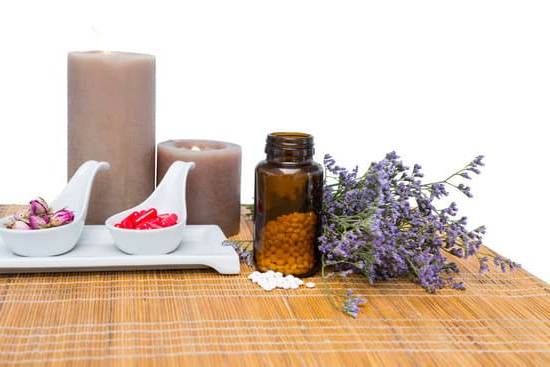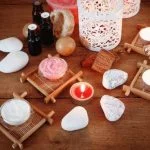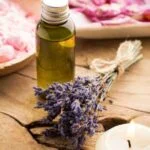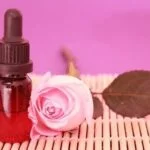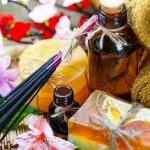Are you interested in creating your own luxurious and therapeutic soap at home? In this article, we will guide you through the process of making aromatherapy soap using essential oils and other natural ingredients. With our step-by-step guide and tips for customization, you’ll be able to create personalized soaps that cater to your specific needs and preferences.
Aromatherapy soap is a type of soap that incorporates the use of essential oils for added therapeutic benefits. These essential oils are derived from various plants and flowers, each with its own unique properties that can promote relaxation, stress relief, or even provide relief from certain skin conditions. In this article, we will explore the benefits of aromatherapy soap and how it can enhance your daily bathing routine.
Using natural ingredients to make aromatherapy soap not only allows you to customize the scents and benefits according to your preferences but also eliminates the need for harmful chemicals found in many commercial soaps. You’ll find that making aromatherapy soap at home is a rewarding and enjoyable experience, allowing you to craft a product that is both beneficial for your skin and appeals to your senses.
Benefits of Aromatherapy Soap
Aromatherapy soap offers a wide range of benefits that can improve both physical and mental well-being. The use of essential oils in aromatherapy soap not only cleanses the skin, but also provides aromatherapeutic benefits through inhalation and absorption. Here are some of the key benefits of using aromatherapy soap:
1. Stress Relief: Certain essential oils, such as lavender and chamomile, are known for their calming and soothing properties. Using an aromatherapy soap with these oils can help reduce stress and anxiety, promoting a sense of relaxation and tranquility.
2. Skin Care Benefits: In addition to their aromatic properties, many essential oils used in aromatherapy soap offer skin care benefits. For example, tea tree oil is known for its antibacterial properties, making it beneficial for acne-prone skin, while sweet almond oil is moisturizing and nourishing.
3. Mood Enhancement: Aromatherapy soaps can be formulated with uplifting essential oils like citrus scents (e.g. lemon or orange) that can help improve mood and energy levels.
Overall, the use of aromatherapy soap can provide a holistic approach to self-care by addressing both physical and emotional well-being.
Essential Oils and Their Aromatherapy Benefits
Creating aromatherapy soap at home allows you to harness the natural benefits of essential oils. These oils are derived from plants and have been used for centuries for their therapeutic properties. When incorporated into soap, they can provide a range of benefits, such as relaxation, stress relief, and skin nourishment.
Here are some popular essential oils and their aromatherapy benefits:
- Lavender oil: Known for its calming and soothing properties, lavender oil is great for promoting relaxation and reducing anxiety.
- Peppermint oil: With its invigorating scent, peppermint oil can help to boost energy levels and improve mental clarity.
- Tea tree oil: This powerful antiseptic oil is often used for its antibacterial and anti-inflammatory properties, making it ideal for treating acne-prone skin.
- Lemongrass oil: Its fresh, citrusy scent makes lemongrass oil a popular choice for uplifting moods and reducing stress.
By understanding the different aromatherapy benefits of essential oils, you can choose the ones that best suit your needs when making your own homemade aromatherapy soap.
When making aromatherapy soap at home, it’s important to carefully consider which essential oils to use based on their specific aromatherapy benefits. Whether you want to create a calming soap for winding down after a long day or an invigorating soap to start your morning off right, the right combination of essential oils can enhance the overall experience of your homemade soap.
By experimenting with different blends and concentrations, you can customize your soap to cater to your specific wellness needs.
Tools and Ingredients Needed for Making Aromatherapy Soap at Home
Making aromatherapy soap at home can be a fun and rewarding experience. Before you get started, it’s important to gather all the necessary tools and ingredients for the process. Here we’ll discuss what you’ll need to make your own aromatherapy soap at home.
Tools Needed
To make aromatherapy soap at home, you’ll need a few basic tools. These include a digital scale for accurately measuring ingredients, a heat-resistant glass measuring cup or bowl for melting the soap base, a silicone spatula for stirring, and soap molds for shaping the final product.
Ingredients Needed
The key ingredient in making aromatherapy soap is a melt-and-pour soap base, which is readily available in craft stores or online. You’ll also need essential oils for their aromatherapeutic benefits, as well as dried herbs, flower petals, or exfoliants if desired. Colorants such as natural clays or micas can also be used to add visual appeal to your soap.
Choosing Your Essential Oils
When selecting essential oils for your aromatherapy soap, it’s important to consider their therapeutic properties. For example, lavender essential oil is known for its calming effects, while peppermint essential oil can invigorate and refresh. Be sure to research each oil’s benefits and potential contraindications before incorporating them into your soap.
By gathering the right tools and ingredients, you can set yourself up for success in creating your own unique and effective aromatherapy soaps at home. Once you have everything you need, you’ll be ready to proceed with the step-by-step process of making these delightful creations.
Step-by-Step Guide to Making Aromatherapy Soap
Making aromatherapy soap at home is a fun and rewarding activity that allows you to customize your soap with your favorite scents and essential oils. Follow this step-by-step guide to create your own personalized aromatherapy soap:
Gather Your Tools and Ingredients
To make aromatherapy soap at home, you will need the following tools and ingredients:
- A heatproof container
- A double boiler or microwave
- Soap molds
- Essential oils of your choice
- Soap base (either melt-and-pour or cold-process)
- Any additional ingredients such as dried herbs, exfoliants, or colorants
Melt the Soap Base
If using a melt-and-pour soap base, cut it into small chunks and melt it in a double boiler or microwave according to the package instructions. If using a cold-process soap base, follow a specific recipe for making homemade soap from scratch.
Add Essential Oils
Once the soap base is melted, carefully stir in the essential oils of your choice. Be sure to research the recommended usage rates for each essential oil to ensure that you are creating a safe and effective blend.
Pour Into Molds and Let It Set
Carefully pour the melted soap into your chosen molds, then allow it to cool and harden completely before removing it from the mold. This may take several hours, depending on the type of soap base used.
By following these simple steps, you can create your own unique aromatherapy soaps at home that are perfect for personal use or as thoughtful gifts for friends and family. Experiment with different essential oil blends, colors, and additives to create a one-of-a-kind product that suits your preferences and needs. Enjoy the therapeutic benefits of aromatherapy every time you use your handmade soaps.
Tips and Tricks for Customizing Your Aromatherapy Soap
Customizing your own aromatherapy soap at home can be a fun and creative process. Not only does it allow you to choose your favorite scents, but it also enables you to customize the soap to address specific skin concerns or to promote certain moods or feelings. Here are some tips and tricks for making unique and customized aromatherapy soap.
First, consider the different essential oils that are best suited for your skin type or the effect you want to achieve. For example, lavender essential oil is known for its calming properties and is great for promoting relaxation, while tea tree oil is excellent for acne-prone skin due to its antibacterial and anti-inflammatory properties. Research various essential oils and their benefits to determine which ones will be best for your customized soap.
Next, think about adding natural exfoliants or additives to your soap to make it even more beneficial for the skin. Ingredients such as oats, dried herbs, coffee grounds, or clay can provide gentle exfoliation or additional skincare benefits. For example, adding colloidal oatmeal to your soap can soothe dry or irritated skin, making it an ideal addition for a calming and moisturizing soap.
Lastly, get creative with the design and presentation of your aromatherapy soap. You can experiment with different molds, colors, and textures to make your soaps visually appealing as well as functional. Consider using natural colorants such as spirulina powder or turmeric for a pop of color, or try layering different scents and colors in one bar of soap for a unique look.
In summary, customizing your own aromatherapy soap at home allows you to create a personalized product that not only smells amazing but also provides specific skincare benefits tailored to your needs.
| Tips | Tricks |
|---|---|
| Choose the right essential oils based on their benefits | Add natural exfoliants or additives like oats or herbs |
| Experiment with design using natural colorants | Create unique shapes using different molds |
How to Properly Store and Preserve Your Aromatherapy Soap
Making your own aromatherapy soap at home can be a fun and rewarding experience. Not only do you get to customize the scents and ingredients, but you also get to enjoy the therapeutic benefits of using essential oils in your daily cleansing routine. However, once you have crafted your beautiful bars of aromatherapy soap, it’s important to know how to properly store and preserve them to ensure their longevity and effectiveness.
One important factor in preserving your aromatherapy soap is to store it in a cool, dry place. Exposure to heat and humidity can cause the soap to become soft and mushy, shortening its lifespan. It’s best to keep your handmade soaps in a well-ventilated area away from direct sunlight and moisture.
Another tip for properly storing your aromatherapy soap is to use breathable packaging. Avoid plastic bags or airtight containers, as they can trap moisture and cause the soap to sweat. Instead, opt for breathable materials like paper or fabric that will allow air circulation while still protecting the soap from dust and debris.
Additionally, if you have made large batches of aromatherapy soap or want to save some for later use, it’s important to label and date your soaps for easy identification. This way, you can keep track of the different scents and ingredients used, as well as monitor their shelf life. Properly stored and labeled, your homemade aromatherapy soaps can last for up to one year while maintaining their fragrance and therapeutic properties.
| Storage Tip | Description |
|---|---|
| Store in a Cool, Dry Place | Avoid heat and humidity by keeping soaps away from direct sunlight and moisture. |
| Use Breathable Packaging | Opt for breathable materials like paper or fabric instead of plastic bags or airtight containers. |
| Label and Date Your Soaps | Keep track of scents, ingredients and shelf life by labeling and dating your homemade soaps. |
Conclusion
In conclusion, learning how to make aromatherapy soap at home can be a rewarding and fulfilling experience. Not only do you have the opportunity to create a personalized product that caters to your specific preferences, but you also get to enjoy the countless benefits of aromatherapy through the daily use of your handmade soap. By using natural ingredients and essential oils, you can elevate your bathing experience while reaping the therapeutic advantages that come with aromatherapy.
Taking the time to understand the benefits of aromatherapy soap and familiarizing yourself with different essential oils allows you to tailor your soap to address various needs, whether it be relaxation, stress relief, or mood enhancement. Additionally, having control over the ingredients in your soap ensures that you are using products that are safe for your skin and free from harmful chemicals.
With just a few simple tools and carefully selected ingredients, you can embark on a journey of crafting your own unique and beneficial aromatherapy soap.
As you begin making your own aromatherapy soap at home, remember to experiment with different essential oil combinations and techniques for customization. Whether it’s adding exfoliants or utilizing creative mold shapes, there are numerous ways to make each bar of soap uniquely yours.
By following proper storage and preservation methods, such as keeping your soap in a cool, dry place away from direct sunlight, you can extend its shelf life and continue enjoying its aromatic benefits for an extended period. Embracing the art of creating aromatherapy soap at home not only brings joy and satisfaction but also contributes to improved well-being through the power of natural scents and ingredients.
Frequently Asked Questions
How Do You Make Aromatherapy Soap?
Aromatherapy soap can be made by combining natural soap base with essential oils such as lavender, tea tree, or peppermint. The process involves melting the soap base, adding the essential oils, and pouring into molds to set.
How Do You Make Aromatherapy Liquid Soap?
Aromatherapy liquid soap can be created using a liquid Castile soap base and mixing in essential oils for fragrance and therapeutic benefits. The addition of carrier oils like jojoba or sweet almond oil can provide extra nourishment for the skin.
Can You Mix Essential Oils Into Soap?
Yes, essential oils can be mixed into soap to add fragrance and potential therapeutic properties. It’s important to properly measure and blend the essential oils into the soap base to ensure a safe and effective final product. Essential oils should also be properly diluted to avoid skin irritation.

Are you looking for a natural way to improve your health and wellbeing?
If so, aromatherapy may be the answer for you.

